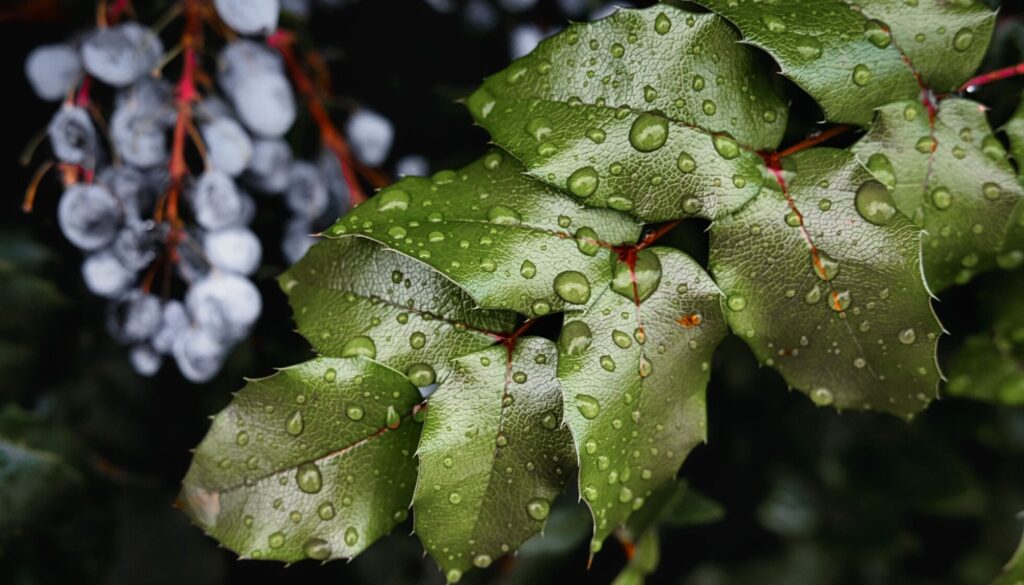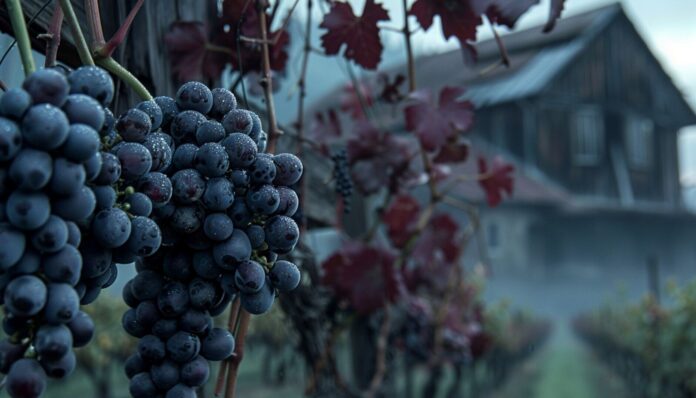weaves through the rugged landscape of Northern California and Southern Oregon, its roots entwined with the history of the land. This resilient vine has adapted to the region’s unpredictable climate, thriving in the shadow of towering mountains and deep valleys. But it is more than just a plant—it’s a symbol of survival, a bearer of tradition, and an economic lifeline for many in the area.
In this article, we’ll journey through the story of the Siskiyou Grapevine, exploring its origins, its biological intricacies, and the role it plays in the ecosystem and economy. We’ll also dive into the challenges of modern viticulture, the cultural significance of the grapevine, and what the future holds for this ancient crop.
2. The Origin and History of Siskiyou Grapevine
Indigenous Presence
Long before settlers arrived, the indigenous peoples of Siskiyou were intimately connected to the land, cultivating and harvesting what nature provided. Although grapes were not central to their agriculture, the native plants and the rich biodiversity of the area laid the groundwork for future agricultural developments.
Agricultural Evolution in Siskiyou
The arrival of European settlers in the 19th century marked a significant shift in agriculture. The grapevine, once wild and untamed, became a symbol of cultivation, resilience, and economic promise. As settlers planted vineyards in the fertile soil, Siskiyou began to transform into a center for viticulture, blending old-world knowledge with new-world ambition.
3. The Unique Climate of Siskiyou
Microclimates of the Region
Siskiyou’s diverse topography creates a mosaic of microclimates, each with its own unique conditions for grape cultivation. From the cool, misty mornings to the warm, sun-drenched afternoons, the Siskiyou grapevine thrives in a delicate balance of temperature fluctuations that give its grapes a distinct character.
Influence of Elevation and Topography
The elevation, ranging from gentle slopes to rugged mountain ranges, profoundly influences the grapevine’s growth. Grapes grown at higher elevations tend to develop more robust flavors, thanks to cooler temperatures and extended growing seasons.
4. Biological Characteristics of the Siskiyou Grapevine
Root Systems and Adaptation
The Siskiyou grapevine’s roots run deep, both metaphorically and literally. These roots are designed to seek out water in the often dry, rocky soil, allowing the vine to withstand periods of drought. This adaptation makes the Siskiyou grapevine a model of resilience in the face of environmental challenges.
Resistance to Pests and Disease
One of the Siskiyou grapevine’s greatest strengths is its natural resistance to many common pests and diseases. Through centuries of evolution, it has developed defense mechanisms that protect it from threats, ensuring its survival in even the harshest of conditions.
5. The Grapevine’s Role in Local Ecosystems
Symbiotic Relationships
The Siskiyou grapevine doesn’t grow in isolation. It forms symbiotic relationships with other plants and wildlife, contributing to a rich and diverse ecosystem. The vines provide shelter for insects, birds, and small mammals, while also promoting pollination and supporting local biodiversity.
Biodiversity and Pollination
The intricate dance of pollination that occurs around the Siskiyou grapevine is a testament to nature’s interconnectivity. Bees, butterflies, and other pollinators are drawn to the grapevine, helping to maintain the delicate balance of the ecosystem.
6. Cultivation Techniques and Challenges
Organic Farming Practices
Siskiyou’s commitment to sustainability is reflected in its grape cultivation methods. Organic farming practices, which focus on reducing chemical use and promoting soil health, have become increasingly popular among local growers.
Managing Environmental Stressors
Despite its hardiness, the Siskiyou grapevine faces challenges, particularly in the form of extreme weather events and shifting climate patterns. Farmers must employ innovative strategies, such as water conservation techniques and pest management, to ensure healthy yields.
7. Winemaking Traditions in Siskiyou
Historical Winemaking Practices
Winemaking in Siskiyou has deep roots. Early settlers brought with them knowledge of European winemaking traditions, which they adapted to the region’s unique climate. These methods have evolved, but many of the fundamental practices remain unchanged, connecting past to present.
Evolution of Modern Methods
Modern winemaking in Siskiyou blends tradition with innovation. Today’s vintners use advanced techniques to improve grape quality and create wines that reflect the region’s distinct terroir.
8. Sustainability and Environmental Stewardship
Grapevines as Climate Resilient Crops
In an era of climate uncertainty, the Siskiyou grapevine stands as a beacon of resilience. Its ability to thrive in challenging conditions makes it an ideal crop for a future where sustainability is key.

Sustainable Viticulture Practices
Sustainable viticulture is at the heart of Siskiyou’s agricultural practices. Growers prioritize soil health, water conservation, and minimal chemical use to protect the environment and ensure long-term viability.
9. The Cultural Significance of Siskiyou Grapevines
Indigenous Knowledge and Traditions
While grapes were not a staple of indigenous agriculture, the native peoples of Siskiyou had a deep understanding of the land. Their knowledge of local plants and ecosystems continues to influence modern cultivation practices.
Local Community Impact
The Siskiyou grapevine is more than just an agricultural product—it’s a cultural symbol. For many in the region, grape cultivation is a way of life, passed down through generations.
10. Economic Importance of the Siskiyou Grapevine
Contribution to Local Agriculture
The grapevine plays a crucial role in Siskiyou’s economy, contributing to local agriculture and providing livelihoods for many farmers. Its economic impact extends beyond the vineyards, influencing related industries like tourism and hospitality.
Wine Tourism in Siskiyou
Siskiyou’s vineyards have become a destination for wine enthusiasts. Tourists flock to the region to sample its unique wines, contributing to the local economy and raising the profile of Siskiyou’s grape-growing industry.
11. Emerging Trends in Grapevine Cultivation
Innovations in Viticulture
As technology advances, so too does grapevine cultivation. Growers are embracing innovations like precision agriculture and climate-smart practices to improve yields and reduce environmental impact.
Future-Ready Farming Practices
The future of grape cultivation in Siskiyou looks bright, with farmers adopting sustainable and future-ready practices that will ensure the longevity of the industry.
12. The Future of Siskiyou Grapevines
Climate Change Considerations
As the global climate shifts, the Siskiyou grapevine faces new challenges. However, its resilience and adaptability offer hope for its continued success in a warming world.
Potential for Global Recognition
With its unique terroir and commitment to sustainability, Siskiyou’s grapevine industry has the potential to gain global recognition, attracting attention from wine connoisseurs and environmentalists alike.
13. Expert Insights
Interviews with Local Winemakers
Local winemakers offer invaluable insight into the challenges and rewards of cultivating the Siskiyou grapevine. Their expertise sheds light on the delicate balance between tradition and innovation.
Agricultural Researchers on Viticulture
Experts in agricultural research highlight the importance of sustainable practices in viticulture, emphasizing the need for climate-resilient crops like the Siskiyou grapevine.
14. Practical Applications for Growers
Tips for New Cultivators
For those new to grape cultivation, the Siskiyou region offers a wealth of knowledge. From soil preparation to pest management, local growers share their best practices for success.
Managing Pests and Soil Health
Healthy soil is the foundation of a thriving vineyard. By focusing on soil health and implementing pest management strategies, growers can ensure strong, resilient vines.
15. Conclusion
The Siskiyou grapevine is more than just a plant—it’s a story of resilience, adaptation, and hope. As we look to the future, the lessons learned from this ancient crop offer a roadmap for sustainable agriculture and environmental stewardship.


